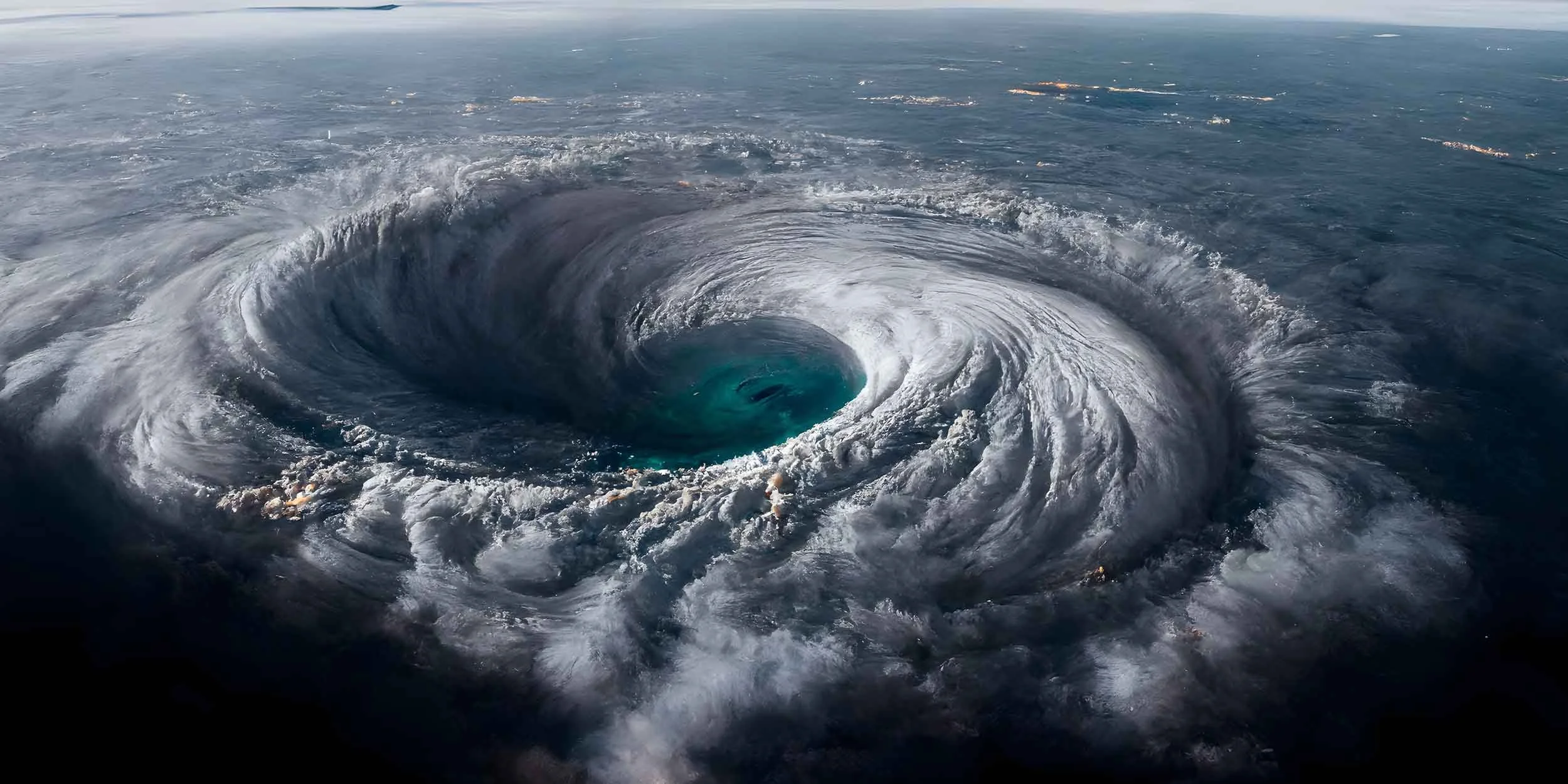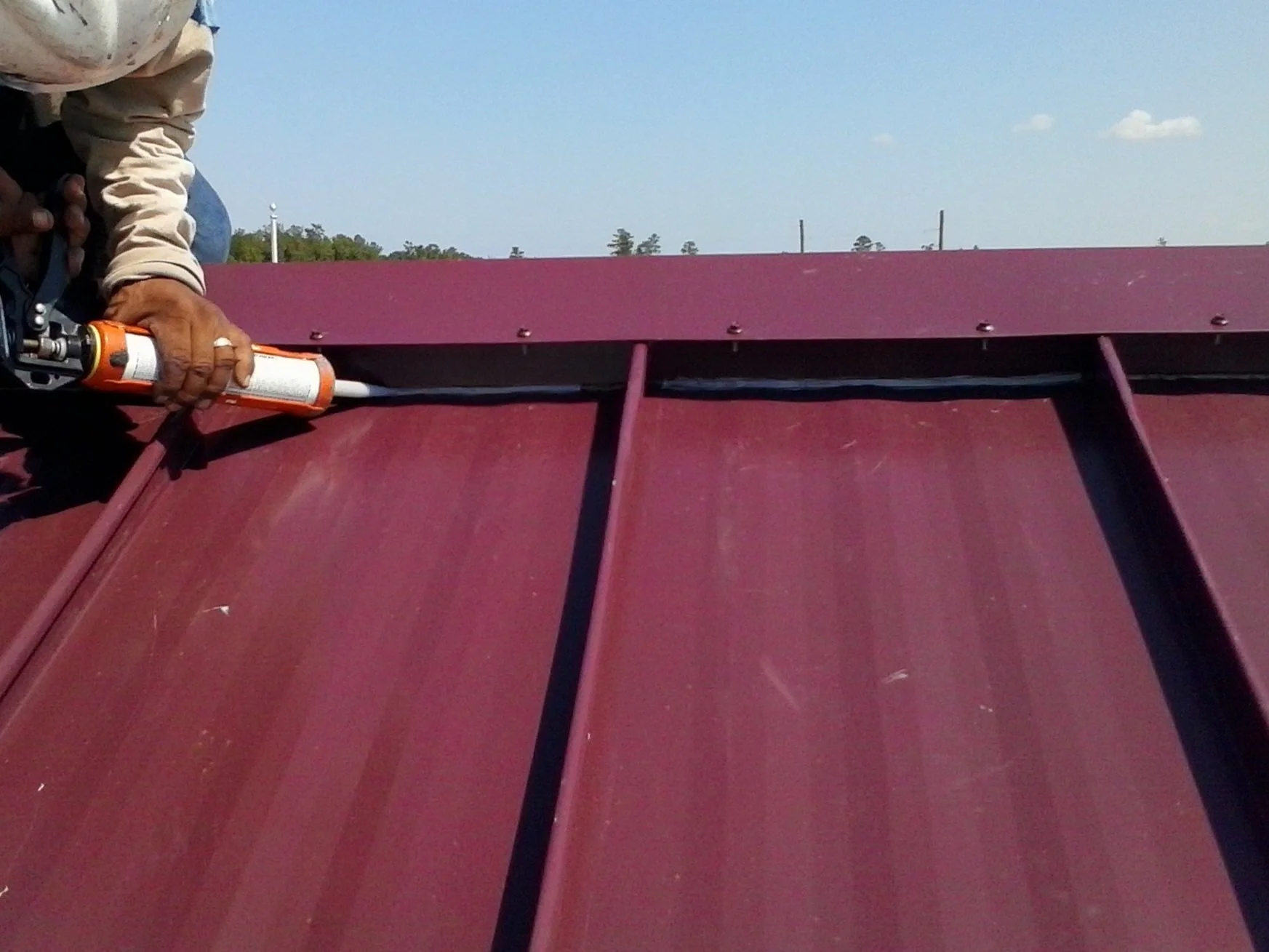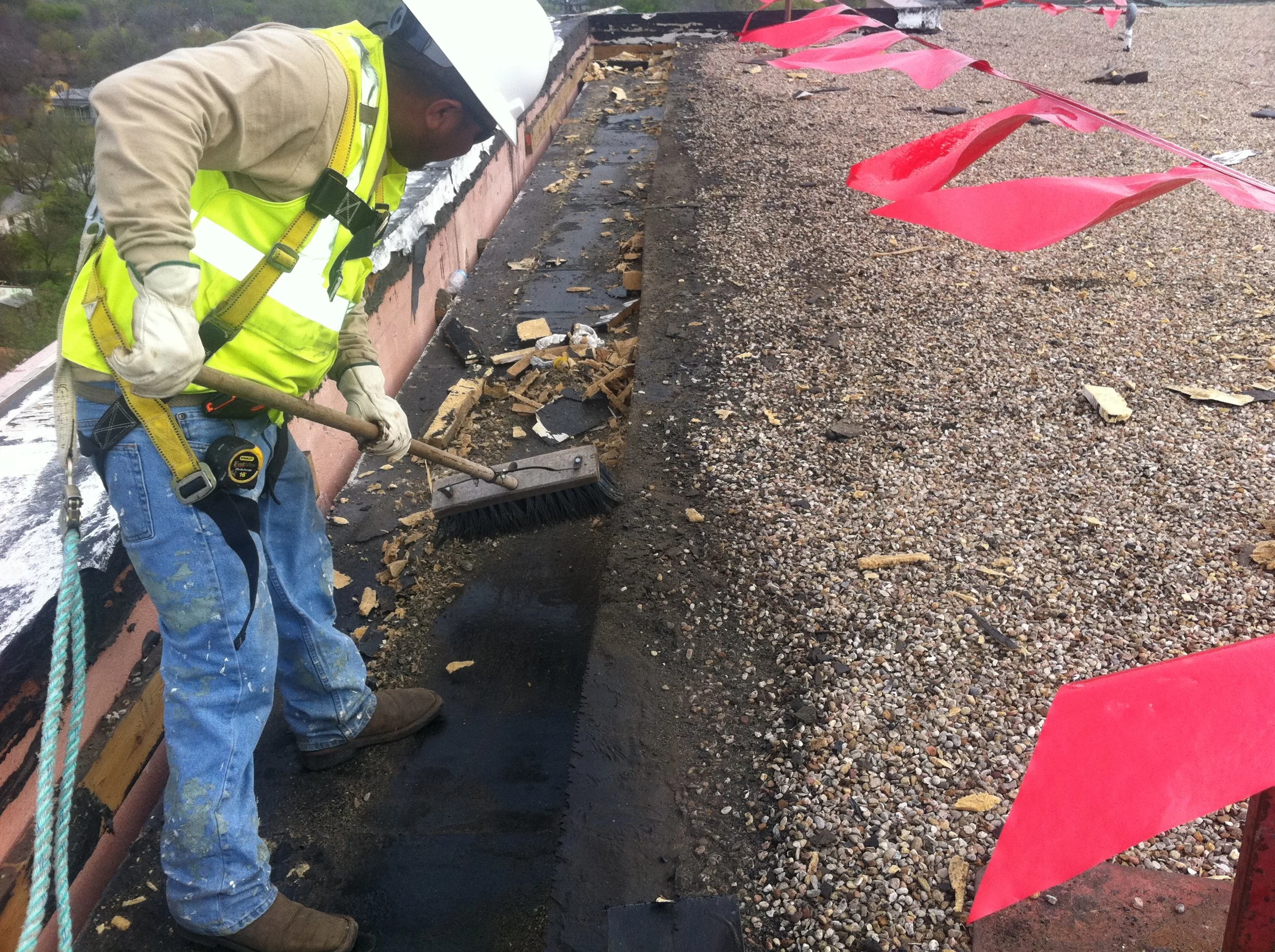The $54 Billion Question: Will Your Commercial Roof Survive the Next Storm? (Extreme Weather Preparedness Guide)
The $54 Billion Question: Will Your Commercial Roof Survive the Next Storm? (Extreme Weather Preparedness Guide) — A Comprehensive Guide for Building Owners and Facility Managers
The Growing Threat: Extreme Weather's Devastating Impact on Commercial Roofing
Extreme weather events are no longer the exception—they're becoming the new normal. And for commercial building owners and facility managers, the financial stakes have never been higher.
In 2024, there were 27 weather disasters in the United States that individually cost $1 billion or more, making it the second-highest number since NOAA records began in 1980. The previous year, 2023, saw 28 weather and climate disasters surpassing the previous record, with a combined price tag of at least $92.9 billion.
But these billion-dollar headlines only tell part of the story. For commercial property owners, the real impact happens at the individual building level, where even "smaller" weather events can cause catastrophic damage to roofing and waterproofing systems.
Hurricane Damage: When Wind and Water Collide
Expected annual economic losses from hurricane winds and storm-related flooding total $54 billion—with $9 billion in losses specifically to the commercial sector. Commercial roofing systems face unique vulnerabilities during hurricanes:
Wind Uplift: Hurricane winds can generate maximum sustained speeds of 74 mph or greater, with the capability to lift membrane, metals, or entire roof sections.
Water Infiltration: Wind-driven rain can penetrate any tiny roof openings, leading to mold, mildew, and water damage that can eventually cause structural issues.
Pressure Differentials: The low pressure inside a tornado or hurricane core, combined with higher atmospheric pressure inside relatively well-sealed buildings, can push up on roofs and out on walls.
Tornado Destruction: The Ultimate Roof Test
Approximately 1,200 tornadoes occur in the U.S. each year, with even 2013's relatively quiet year resulting in over a billion dollars in damage. The damage potential is staggering:
EF0-EF1 Tornadoes: Wind speeds of 65-110 mph can cause minor to moderate damage, breaking tree branches, roof shingles, and overturning mobile structures.
EF2-EF3 Tornadoes: Wind speeds of 111-165 mph cause significant to severe damage, including tearing off most walls from well-constructed homes and uprooting large trees.
Catastrophic Events: The 2011 Joplin tornado damaged or destroyed nearly 8,000 buildings with 161 fatalities and $3 billion in costs, making it the single deadliest and costliest tornado since official records began in 1950.
The Flooding Factor: Water's Silent Destruction
Heavy rainfall and flooding represent perhaps the most underestimated threat to commercial roofing systems. Recent data shows that 25.4% of businesses in the Houston Metropolitan area reported weather-related monetary losses following Hurricane Beryl, with the impact felt statewide as Texas businesses reporting losses nearly doubled.
The cascading effects of water intrusion can be devastating:
Structural damage to roof decking and support systems
Mold and mildew growth affecting indoor air quality
Damage to interior assets, equipment, and inventory
Business interruption and lost revenue
Flooding can shut down access routes which in turn can elevate a minor roof leak to something far worse
The Critical Need for Property-Specific Extreme Weather Programs
Here's the reality that many building owners don't realize: every commercial property is different, and every extreme weather program must be tailored accordingly.
Your building's size, height, roof type, geographic location, and local climate patterns all create a unique risk profile that demands a customized approach. A low-slope TPO roof on a 50,000-square-foot distribution center in Houston faces entirely different challenges than a steep-slope metal roof on a three-story office building in Kansas City.
Stronger building codes are one of the best ways to ensure property can withstand catastrophes, with Florida implementing changes after Hurricane Andrew and again in 2007, making new construction significantly more hurricane-proof. However, existing buildings need proactive, customized programs to bridge the gap between current vulnerabilities and optimal protection.
The Data-Driven Case for Advanced Preparation
The evidence for proactive extreme weather preparedness is overwhelming:
Storm-Hardening ROI: While storm-hardening a building can require a nominal upfront cost, the return on investment can be significant, with improvements like enhanced framing making facilities stronger and reducing potential damage during high winds.
Cost Savings Through Prevention: Professional roof inspections cost between $250-$1,000 (depending on size), while roof reinforcement averages $500-$1,500/SQ—a fraction of the $2,000-$10,000+/SQ cost of major hurricane repairs or complete roof replacement.
Insurance Benefits: Commercial building insurance costs could increase from $2,726 in 2023 to $4,890 in 2030, with proper preparedness potentially mitigating some of these rising costs.
Business Continuity: Severe storms caused more than $50 billion in damages in 2023, with proper preparation helping businesses reduce both damage and operational disruption.
The Four Pillars of an Effective Extreme Weather Program
Every comprehensive extreme weather program must include four essential components, each serving a specific purpose in your building's protection strategy:
1. Pre-Season Preparedness Checklist
This establishes your baseline protection before weather seasons emerge. Pre-season preparation allows you to address vulnerabilities when contractors and materials are readily available, costs are lower, and there's no time pressure. This phase focuses on improvements, preventive maintenance, and system upgrades that strengthen your building's overall resilience.
2. Pre-Weather Event Checklist
When specific weather threats are forecasted, this checklist activates your immediate protection protocols. These are the critical actions that must be completed in the 24-72 hours before severe weather arrives, focusing on securing loose materials, protecting vulnerable openings, and ensuring drainage systems are clear and functional.
3. During Weather Event Protocols
This phase addresses real-time monitoring and emergency response while the weather event is occurring. These protocols focus on safety procedures, emergency communications, and damage documentation while prioritizing life safety above all else.
4. Post-Weather Event Assessment
After the storm passes, this systematic evaluation process identifies damage, prioritizes repairs, and captures insurance documentation. Quick action during this phase prevents small problems from becoming major issues and ensures proper insurance claim documentation.
Why One Size Never Fits All: Customizing Your Program
The extreme weather program that works for a single-story warehouse in Phoenix will fail catastrophically for a high-rise office building in Miami. Here's why customization is non-negotiable:
Geographic Risk Factors:
Hurricane zones require different preparation than tornado alleys
Coastal properties face storm surge risks that inland buildings never encounter
Desert climates bring extreme heat and challenges unique to arid regions
Building Characteristics:
Roof type (TPO, EPDM, built-up, metal) determines specific vulnerabilities and protection methods
Building height affects wind load calculations and evacuation procedures
Age of structure influences compliance with modern building codes and structural integrity
Occupancy type determines emergency procedures and business continuity requirements
Operational Considerations:
24/7 operations require different protocols than standard business hours
Critical infrastructure (hospitals, data centers) demands higher protection standards
Multi-tenant buildings need more complex communication and coordination procedures
Pre-Weather Event Checklist: Sample
Here is a sample of what could be included in a Pre-Weather Event Checklist:
Essential Pre-Weather Event Actions:
TAKE PHOTOS OF ROOF CONDITION Document existing conditions for insurance purposes and post-storm damage assessment
COVER WINDOWS, SKYLIGHTS, CLEAR STORIES WITH PLYWOOD Protect vulnerable glazed openings from flying debris and pressure differentials
TRIM TREES AWAY FROM ROOF (3FT MINIMUM) Remove potential projectiles and prevent branch impact damage
REMOVE ALL LOOSE DEBRIS FROM ROOF Clear any materials that could become dangerous projectiles
CHECK HVAC UNITS TO ENSURE ALL DOORS AND ACCESS PANELS ARE SECURE Prevent equipment damage and water infiltration through unsecured openings
CHECK ALL FANS/INTAKE COVERS Verify proper attachment and consider temporary additional securing
CLEAN AND CLEAR ALL ROOF DRAINAGE POINTS AND OVERFLOW POINTS Ensure maximum water removal capacity when heavy rains arrive
CHECK ALL EDGE METAL FOR PROPER SECUREMENT Verify that roof perimeter components can withstand uplift forces
REMOVE OR TIE DOWN ANY UNSECURED EQUIPMENT, GUTTERS, LIGHTNING PROTECTION, ETC. Eliminate potential projectiles and prevent equipment loss
CHECK ROOF HATCH/DOORS TO ENSURE PROPER CLOSURE Prevent water infiltration through access points
VERIFY EMERGENCY CONTACT INFORMATION Confirm 24/7 availability of roofing contractors, restoration companies, and key personnel
Building Your Future: Next Steps for Extreme Weather Resilience
The question isn't whether extreme weather will impact your commercial property—it's whether you'll be prepared when it does.
Over the last seven years (2017-2023), 137 separate billion-dollar disasters have killed at least 5,500 people and cost more than $1 trillion in damage. For commercial property owners, this represents both a massive threat and a clear call to action.
Every day you delay implementing a comprehensive extreme weather program is another day your property remains vulnerable to catastrophic damage, business interruption, and potential liability issues.
Don't wait for the forecast to turn severe. Don’t trust that your contractor “has it figured out.” Have a written plan, know the plan, and work the plan.
The time to act is now—before the next storm appears on the radar, before contractor schedules fill up, and before emergency pricing takes effect.
Ready to Protect Your Investment?
Contact Eskola Roofing and Waterproofing or one of our companies today to schedule your comprehensive extreme weather program consultation. Our team of commercial roofing specialists will assess your property's unique vulnerabilities and develop a customized preparedness program that protects your building, your business, and your peace of mind.
Don't leave your property's protection to chance. In the battle against extreme weather, preparation isn't just your best defense—it's your only defense.
Eskola Roofing and Waterproofing has been protecting commercial properties for over 50 years. Our extreme weather preparedness programs are tailored to each property's unique challenges and designed to minimize damage while maximizing protection. Contact us today to learn how we can help safeguard your investment.



